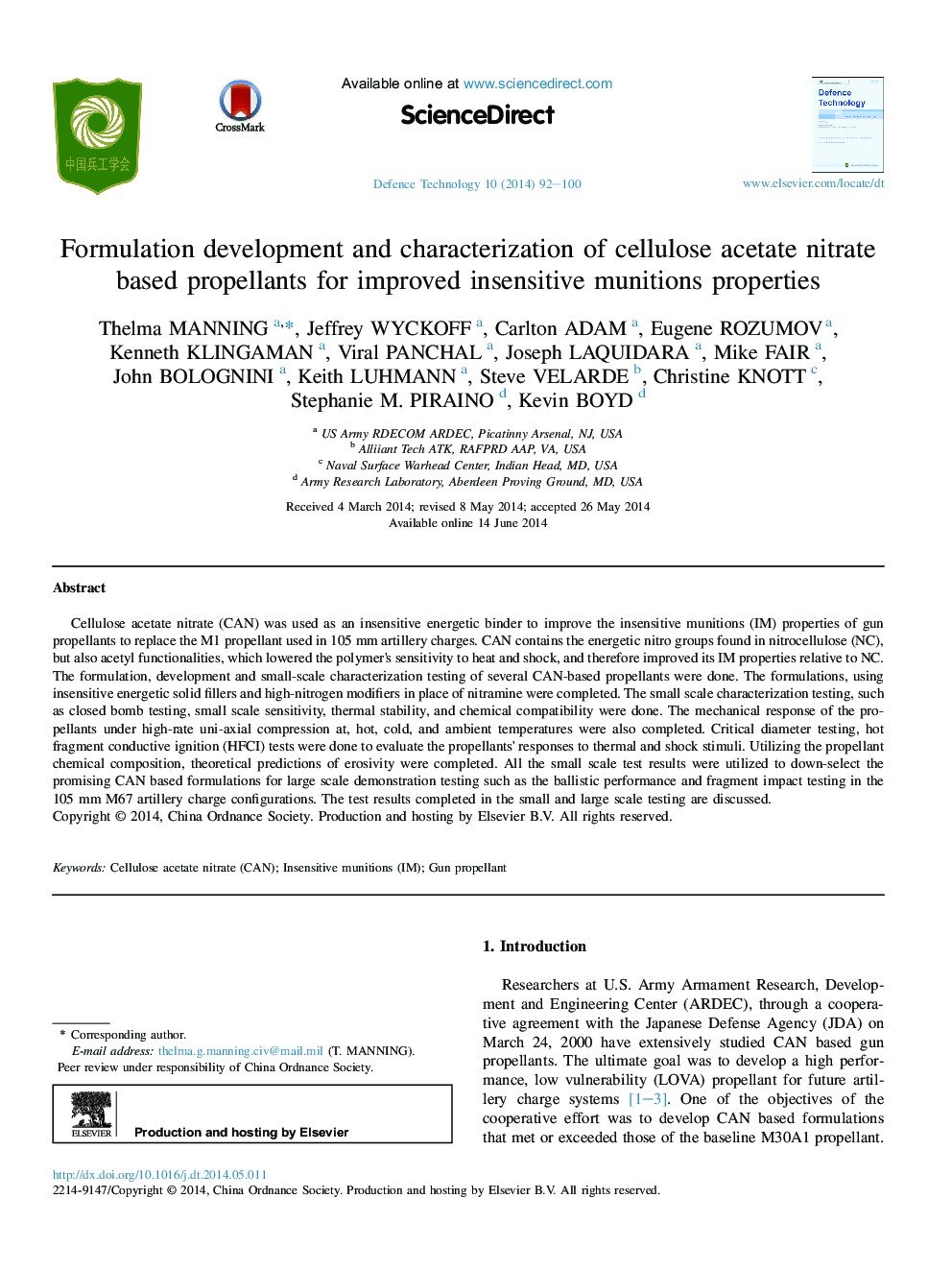| Article ID | Journal | Published Year | Pages | File Type |
|---|---|---|---|---|
| 759821 | Defence Technology | 2014 | 9 Pages |
Cellulose acetate nitrate (CAN) was used as an insensitive energetic binder to improve the insensitive munitions (IM) properties of gun propellants to replace the M1 propellant used in 105 mm artillery charges. CAN contains the energetic nitro groups found in nitrocellulose (NC), but also acetyl functionalities, which lowered the polymer's sensitivity to heat and shock, and therefore improved its IM properties relative to NC. The formulation, development and small-scale characterization testing of several CAN-based propellants were done. The formulations, using insensitive energetic solid fillers and high-nitrogen modifiers in place of nitramine were completed. The small scale characterization testing, such as closed bomb testing, small scale sensitivity, thermal stability, and chemical compatibility were done. The mechanical response of the propellants under high-rate uni-axial compression at, hot, cold, and ambient temperatures were also completed. Critical diameter testing, hot fragment conductive ignition (HFCI) tests were done to evaluate the propellants' responses to thermal and shock stimuli. Utilizing the propellant chemical composition, theoretical predictions of erosivity were completed. All the small scale test results were utilized to down-select the promising CAN based formulations for large scale demonstration testing such as the ballistic performance and fragment impact testing in the 105 mm M67 artillery charge configurations. The test results completed in the small and large scale testing are discussed.
